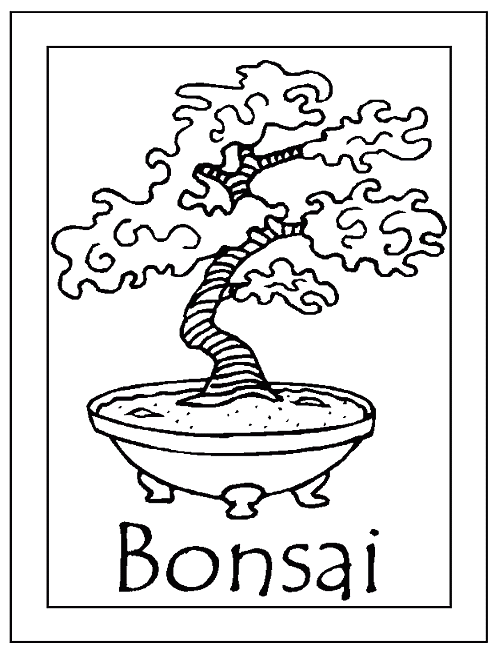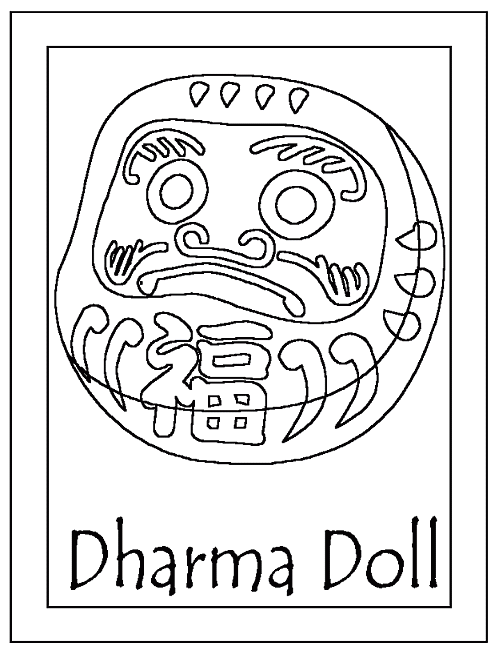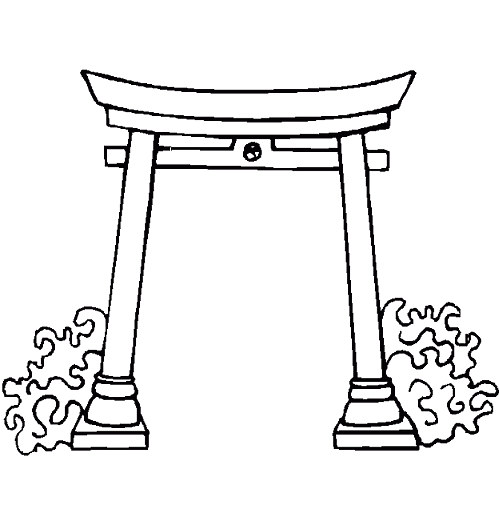Bonsai Trees
Many Japanese people like to grow small, or "dwarf" trees called "Bonsai." They carefully trim and prune the trees and often wire the branches so they will grow in interesting shapes. Here's a Bonsai tree for you to print out and color.

Dharma or Daruma Doll
Daruma (known in Chinese as Ta Mo and in Sanskrit by his original name of Bodhidharma) was the Indian Buddhist monk who first brought Zen to China around 500 CE. Daruma has a ferocious reputation in the Orient for his determination and perseverance. He is the subject of many famous paintings, stories, and legends. Three in particular have become part of Japanese folklore and practice.
Nanakarobi-yaoki. Daruma's determination to achieve Enlightenment was fierce. He is said to have sat in silent meditation, gazing at a wall, for nine years. He sat so long, the story goes, that his legs fell off! Since that time, Chinese and Japanese families have kept "Daruma dolls," which have no legs and are weighted so that whenever they are pushed over they bounce back to an upright position. In Japanese, such a doll is called a "okiagari-koboshi," or a "monk who can easily get up." These dolls represent the resilience and the spirit undaunted by failure or setbacks that are expected of a samurai. This spirit is also captured by the common slogan "nanakarobi-yaoki," or "seven times down, eight times up." No matter how many times you are knocked over by life, you can bounce back up so long as you keep an undaunted spirit.
Daruma's eyes. Not only did Daruma's legs supposedly shrivel up and fall off, but legends say he went blind from staring at the wall in silent Zen meditation. Another version of the story says that Daruma became angry at himself for falling asleep one day during meditation and cut off his eyelids to show his determination to remain alert until he achieved Enlightenment. These legends gave rise to another Japanese tradition, and another kind of Daruma doll. Many households keep a papier-mâché Daruma doll in a conspicuous place in the home. But this doll has no eyes. When a person wants to pray for some special outcome or result, he paints in one of the eyes. When the wish comes true, he paints in the other eye.
Daruma's martial arts. Legends also attribute to Daruma the founding of the Shaolin Monastery and the creation of a series of martial arts exercises intended to keep the monks physically fit and enable them to protect themselves from human or animal attackers. This Shaolin-style fighting method, tradition says, was handed down from generation to generation until it became modern Shorin-ryu karate. In fact, the word "Shorin" is a Japanese pronunciation of Daruma's "Shaolin" monastery. (From Christopher M. Clarke, et al., Little Dragons and Tigers (2001). The complete book is available for sale on the website under "Books" in the Children's section.)
Print out the Daruma doll and color it.

The Torii Gate
In Japan, torii gates often lead to special places like temples, natural sites with special meanings (like mountains, groves of trees, and beautiful views of the ocean). Torii gates are almost always red and sometimes have a large rope hung from the top. This one appears to be surrounded by ocean waves. Print it out and color it. Where does it lead? Can you tell a story about what's on the other side of this special gate?
